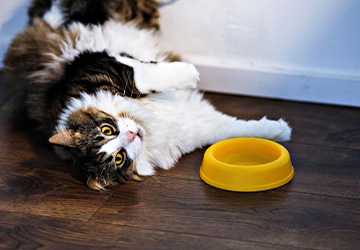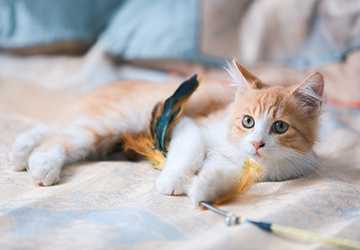5 Best Cat Training Tips to Foster a Loving Bond
With their graceful moves and deep purrs, cats often leave us wishing for a closer bond. They have a world full of wonders, and it's time for you to be part of it. Training your cat does wonders. It not only deepens your connection but also ensures you remain mentally stimulated. A trained cat is indeed a joyous and content companion. Imagine a harmonious relationship with your feline friend, understanding each other's whims and wishes. This dreamy connection is within your grasp with the proper guidance. This blog post will suggest five best cat training tips to foster a loving bond like never before. With these tips, you can train your cat like a pro. Stay with us, and let's train your cat!

5 Tips to Deepen Your Bond Through Cat Training
Training a cat isn't just about teaching tricks; it's about building a lifelong bond of trust and understanding. Here’s a detailed guide on how to make this journey with your feline friend more meaningful and successful.
Consistent Communication is Key
Cats, like humans, crave consistency. They find comfort in routines and predictable behavior. Using the same commands and gestures, you help your cat recognize what you're asking. A cat that understands your commands is easier to manage, reducing potential stress. Maintain a calm and consistent tone; cats can sense agitation. Along with verbal cues, use consistent hand gestures or movements. Feeding, playing, and bedtime at regular hours can help your cat feel more secure. Begin with simple commands like "sit" or "stay." Always use the same word and tone for each command. Over time, your cat will associate the word with the action. Always use the exact words for actions, like "down" or "no."
Reward, Don’t Punish
Positive reinforcement is the cornerstone of practical training. Instead of focusing on what your cat is doing wrong, concentrate on rewarding what they're doing right. A happy and positive environment ensures a loving bond between you and your cat. Stock up on cat-friendly treats. Every time your cat exhibits good behavior, reward them. Pair the treat with verbal praise for maximum impact. Not just treats, but praise, petting, or their favorite toy can be rewarding. Give the reward immediately after the positive behavior to make the connection clear. Shouting or physical punishments can harm your bond. Keep treats handy and offer them when your cat does something right.

Playtime Matters
Cats are playful creatures. Their instinct is to hunt and play. Incorporating play into training can be a game-changer. Play sessions can be both fun and productive. It's also the perfect opportunity for bonding. Dedicate a fixed time daily for play. Use toys that challenge your cat's hunting skills. During play, introduce commands and reward them when they follow through. Toys that require both you and your cat to play can enhance bonding. Keep things fresh by rotating toys; this prevents boredom. Ensure toys are safe, without any small parts that can be swallowed. Schedule daily playtimes. Use toys that mimic prey for extra fun.
Start Training Early
The saying, "You can't teach an old dog new tricks," can sometimes apply to cats, too. While older cats can be trained, starting early gives you a head start. Training becomes smoother, and behavioral issues can be nipped in the bud. If you have a kitten, introduce them to simple commands early on. For older cats, be patient and persistent. Expose kittens to various people, sounds, and experiences to make them well-adjusted adults. What you train a kitten might differ from that of an older cat. Adapt accordingly. They might take longer but celebrate small victories. Even if your cat is older, don't fret. Patience goes a long way.
Use Their Instincts
Cats are instinctual animals. Training that aligns with their natural behaviors and instincts is often more successful. A content cat that gets to express its natural behaviors. Observe your cat and understand their preferences. Do they like climbing? Set up a vertical space. Do they enjoy hunting? Train them in ways that feel natural to them. Play sessions that mimic hunting can be very engaging for cats. Cats love heights: providing climbing spaces can be fun and a good exercise. Supervised outdoor time allows cats to explore and exhibit natural behaviorists up obstacle courses or play hide and seek with treats.
Conclusion
Training your cat is a journey, not a destination. It takes time, patience, and consistency. But the rewards are well worth it. A trained cat is a joy to live with. They're easier to manage, less stressed, and more content. And most importantly, they have a deeper bond with you. So don't be afraid to give it a try. Start with simple commands and gradually build up to more complex ones. Be consistent with your rewards and training sessions. Most importantly, have fun!







